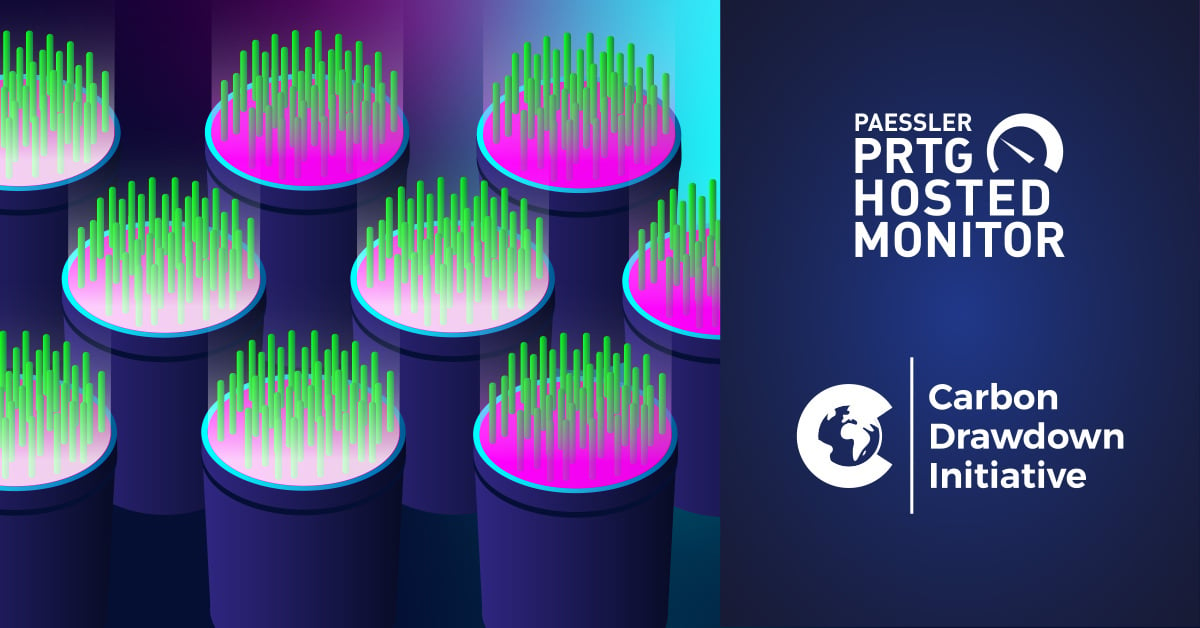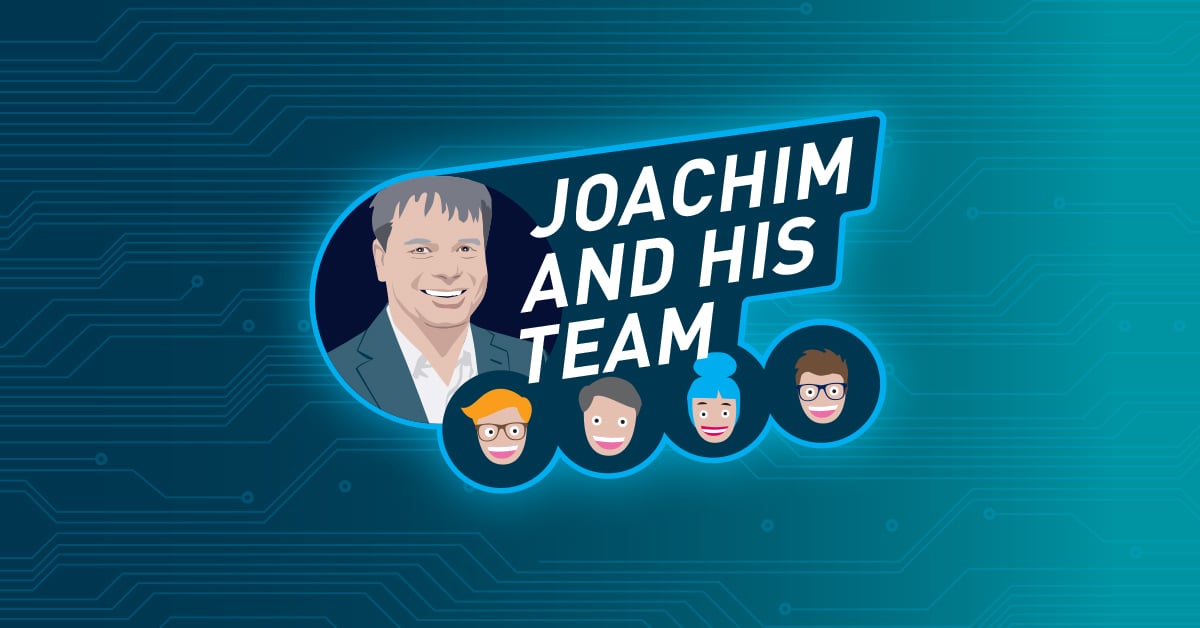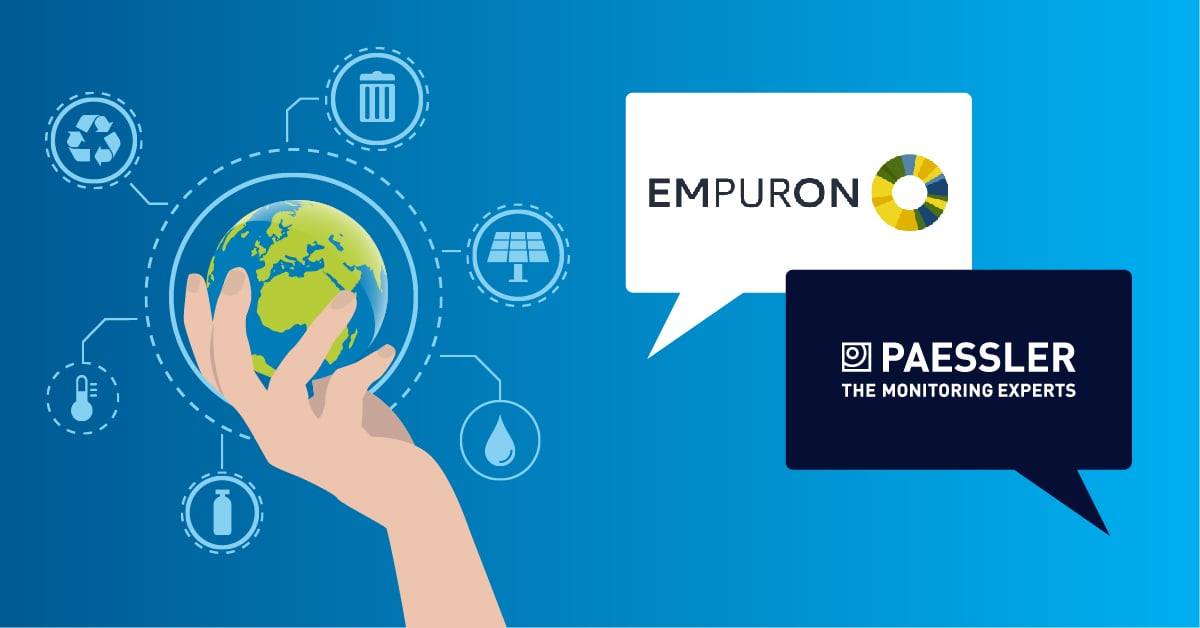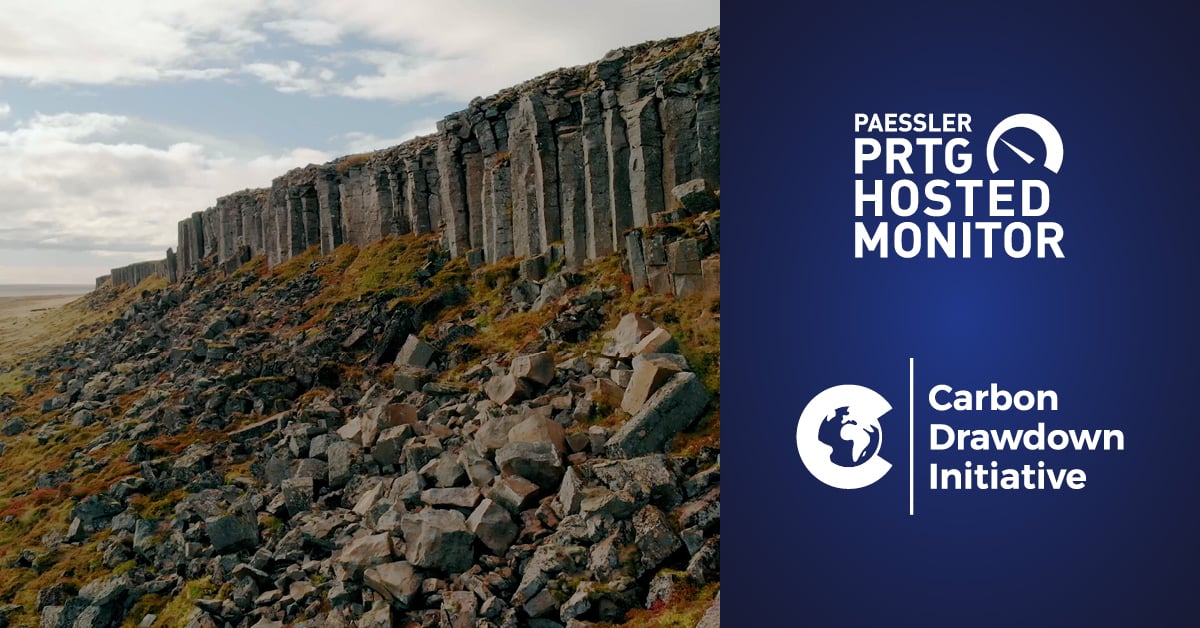It's hard to describe what it feels like to stand in a greenhouse with almost 400 pots, growing neither veggies nor flowers, but the most closely monitored and pampered blades of grass I've ever seen. Scientists and research assistants are bustling around the pots (technically dubbed "lysimeters" — I'll dive into that later), analyzing soil and run-off water. Ralf Steffens, CTO of Carbon Drawdown Initiative, is showing me around and explains to me how to set up and operate a greenhouse that is unique in the world. Serious research is happening here, no doubt, but it's all done with a twist, a flair for the unconventional that's proven to be successful. I'm observing a lot of passion in every detail, and people driven by the desire to counter the climate crisis with something reliable and scalable. Meanwhile, employing Paessler PRTG Hosted Monitor, the greenhouse conducts are captivating monitoring activities, transforming the wealth of 5 million daily data points into actionable scientific insights.
Dirk Paessler is the founder of Paessler AG and believes in an almost completely data-driven approach. With a keen eye for detail, Dirk delves into the intricate world of enhanced weathering, seeking to unravel its secrets and supercharge CO₂ sequestration efforts. In early 2020, he founded Carbon Drawdown Initiative. This organization focuses on promoting research and impact investments aimed at negative emissions — removing carbon dioxide from the atmosphere and securing it long-term to counteract climate change. When Dirk had to choose a suitable monitoring solution for his greenhouse research, labeled with the name "Project Carbdown", he knew what to choose. Familiar with the PRTG product family, Dirk opted for our hosted IT monitoring.
Crushing minerals can crush our CO₂ problems
What Project Carbdown’s team devotes their time, creativity, and vision to is the concept of enhanced weathering (EW), something as simple as it is complex.
i What laymen need to know about EW
Enhanced weathering (EW) holds promise as a climate solution with a deceptively simple premise: sprinkle finely ground rock dust onto farmlands. This dust acts like a CO₂ magnet, luring the greenhouse gas from the atmosphere and whisking it away into leachate water, bound for the oceans where it's stashed away safely.
🌱👉 CO₂ discharged into the oceans ceases to have a warming effect on the earth!
Sounds simple, right? However, implementing this nature-based method on a large scale is anything but. Weathering of added rock dust in complex soil environments needs more time and research. The largest industrially operated EW plants in the world are not yet able to achieve anywhere near what would be needed for EW to make a difference in the future. But we're getting there! Teams like Dirk's are learning more every day and once we crack the code, the possibilities are limitless. Almost all experts confirm that, once it works reliably, EW will effectively copy Earth’s time-tested natural method to control its atmospheric CO₂ concentration.
😬 Oh, and of course reality is more complex than the lab, which is why EW works a bit differently in agricultural practice, as you can see here:

🌱👉 Some of the latest results of Project Carbdown's research are presented here — both briefly and in the form of a comprehensive working paper.
Every second counts
Project Carbdown isn't afraid to march to the beat of its own drum, setting itself apart from the pack in the EW industry. The team firmly believes that their unconventional approach brings benefits to the global research community. It's not just because they boast the world's largest EW greenhouse facility — though that's certainly impressive. But what really sets them apart is their unwavering commitment to round-the-clock monitoring. While other projects might settle for a sporadic check-in every few weeks, Project Carbdown opts for 24/7/365 monitoring. This constant vigilance offers unparalleled insight, ensuring that no detail escapes their watchful eyes. Dirk’s team hardly misses a thing of what’s going on in their lysimeters, cylindrical containers filled with soil, currently integrating a mix of 15 soils and 11 rock dust types.
Project Carbdown also likes to go its way when it comes to publishing scientific findings. Dirk's team doesn't get bogged down in the traditional peer review process, which, let's face it, has its fair share of skeptics. Instead, they skip the line altogether, thanks to their treasure trove of rock-solid data. Take, for instance, the CO₂ efflux — a fancy term for the carbon dioxide that soil releases into the air. It's like a window into the bustling underground world, giving us real-time insights into carbon sequestration. Project Carbdown meticulously tracks this CO₂ efflux, leaving no stone unturned in its quest to gauge carbon sequestration efficiency. While others might put their faith in peer review, Dirk and his crew place their trust in the power of their data. After all, science marches forward when we prioritize accuracy over bureaucracy.

Taming tech wilderness: Enter PRTG
Now, how do Dirk and his team use PRTG? Dealing with the deluge of data has been no small feat from the get-go. By learning about terms like the CO₂ efflux and from everything else I’ve described, it’s clear that these are not "your everyday data points". Alongside chemical readings like pH levels and soil conductivity, there's a whole smorgasbord of environmental data to keep tabs on — think solar radiation, irrigation schedules, and of course, temperature. To tackle this challenge, Project Carbdown started to employ a robust data pipeline facilitated by the MQTT protocol — a lightweight messaging system ideal for IoT applications with unstable network conditions. The data is routed through a Mosquitto MQTT broker and then processed and visualized using Node Red, supporting real-time data handling. All of this ensures the seamless transmission of sensor readings to cloud services like PRTG Hosted Monitor. And if you're scratching your head about how to snag reliable internet in a greenhouse stranded in the middle of nowhere (a perennial headache in Germany, unfortunately), there's only one word to say: Starlink. I recommend Dirk's article on this topic.
Dirk and his team have assembled a motley crew of sensors from different manufacturers, each handpicked for its unique role in the project. Dirk says, "The automation provided by PRTG, coupled with affordable sensors, keeps potential future scaling doors open." While PRTG is typically known for its robust IT monitoring capabilities, at Project Carbdown its role is more specialized, yet pivotal. It doesn't really analyze data but ensures the smooth running of an automated measuring and monitoring system that allows for the scientific evaluation of EW processes.

Let's cap off this journey with a glimpse into what happens on the flip side of the data pipeline. Once their data has been wrangled and analyzed, it finds its home in three main categories: aggregated, logging, and high-frequency/live data. Aggregated data is updated every 10 minutes or hourly, enabling scientific analysis via Google Sheets and Google Looker Studio. Logging data mostly serves for maintenance as well as specific problem solving and is also stored in Google Sheets. High-frequency/live data (including the minutely variations in CO₂ efflux) is stored in a Graphite time-series database: Analysis of these streams via Grafana dashboards allows for a granular view of patterns, which helps with the detection of dynamics that other monitoring frequencies might miss.
"Monitoring with PRTG Hosted Monitor gives us an excellent overview of the reactions in the soil. By displaying soil and other data from connected sensors and other measurement systems, we gather essential insights. This monitoring solution doesn't just collect vast amounts of data (we’re dealing with a few million data points every day), but ensures these are precise and readily available for further analysis."
Breaking the cost barrier
Affordability poses yet another challenge that Dirk and his team have tackled heads-on. This is not just about making their work more cost-effective, but about rethinking industry standards and enabling affordable access to high-quality scientific work. Take, for instance, the off-the-shelf "fluxmeters."* Sure, they're scientifically precise, but they come with a hefty price tag, often ringing in at several tens of thousands of USD each.
i*What's with all the "...meters"?
Picture this: You've got a lysimeter, which is like an underground bucket. It's buried in the soil, collecting water and other liquids that seep through. Think of it as a detective, quietly gathering clues about what's happening beneath the surface. On the other hand, a fluxmeter is more like a nosy neighbor, peeking over the fence to see what's going on. It sits above ground, measuring the gases that move in and out of the soil, particularly carbon dioxide. So, while the lysimeter focuses on soil and liquids, the fluxmeter keeps an eye on gases. Together, they give a complete picture of what's happening underground, helping us understand everything from water movement to carbon cycling in the environment.
The off-the-shelf fluxmeters are also a bit of a hassle, especially if you're aiming for a data deluge. To autonomously measure soil CO₂ effluxes every 10 minutes for all 400 lysimeters, Project Carbdown had to specially design and construct their own fluxmeters. As you can read in detail in this article, the total cost was a mere 170 EUR per device. This provides a blueprint for other researchers on how to generate accurate measurement data at low cost. Here's the kicker: these homemade marvels boast an accuracy of about +/- 15% compared to the high-end scientific fluxmeters. Not too bad for an instrument that costs maybe 1% or less than the off-the-shelf device.

As a monitoring expert, it was important to Dirk to prove that high-performance monitoring does not have to be an expensive endeavor. Again, Project Carbdown emphasizes its cost efficiency: Despite drowning in data and navigating a labyrinth of monitoring intricacies, they keep their monthly cloud services and data management bill under 150 EUR. How? For one thing, by tapping into budget-friendly cloud services like Pipedream and harnessing the power of Google's suite for data analysis. Plus, Project Carbdown is riding the reliability train with MQTT for data transmission, minimizing overhead, and maximizing efficiency. This approach paints a clear picture:
🌱👉 Monitoring projects can handle hefty data loads without generating high costs!
In conclusion
For me, Carbon Drawdown Initiative represents vision, sound research, and the skillful combination of existing technology. With PRTG's monitoring in the mix, it's not just about watching data; it's about ensuring the backbone of scientific integrity. In the area of further research, where precision and reliability are paramount, PRTG proves to be more than just an IT tool — it becomes part of the mission to tackle one of the most pressing, frightening issues of our time: climate change.
 Published by
Published by 










